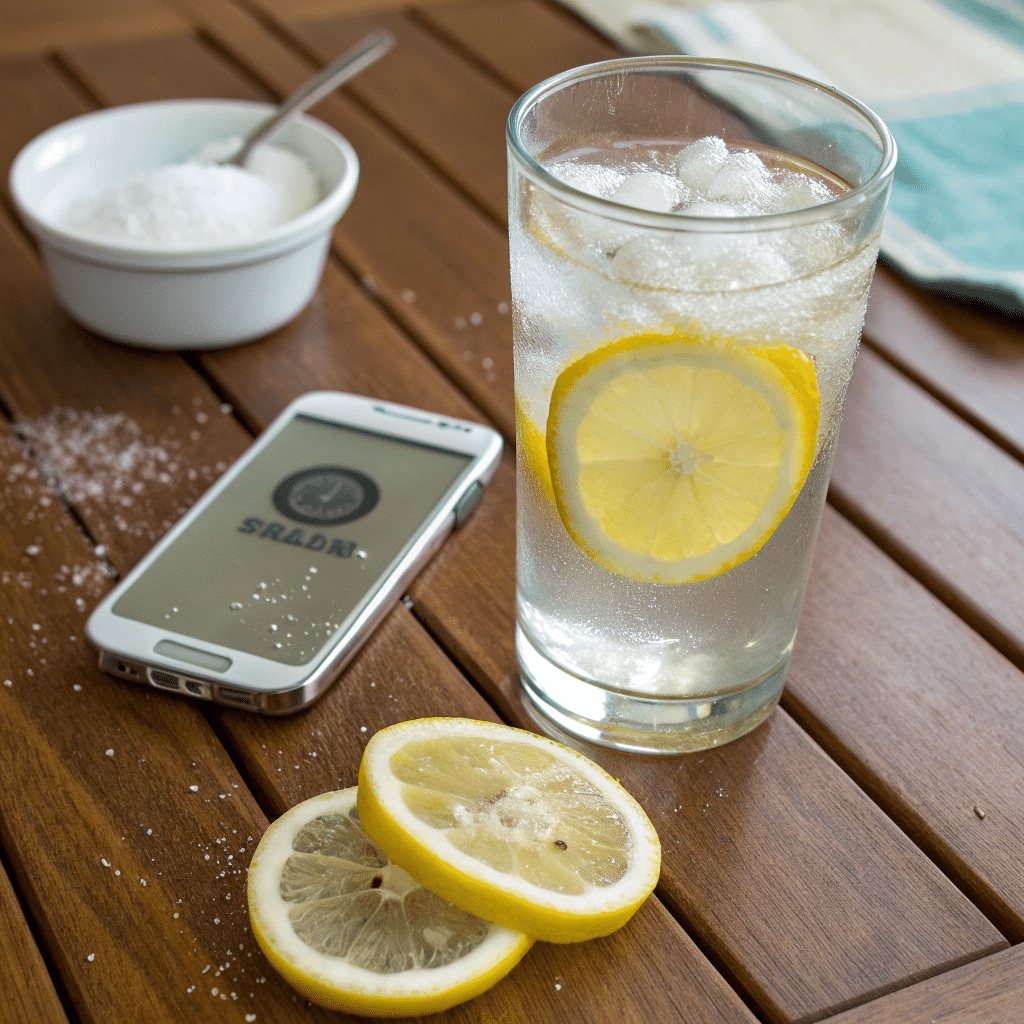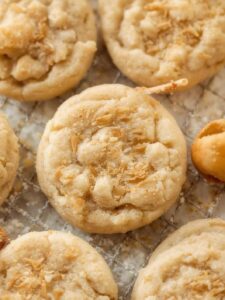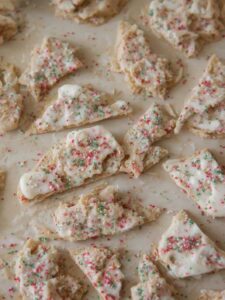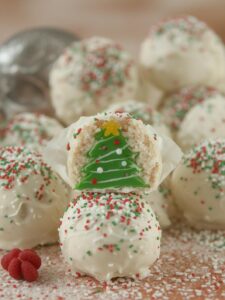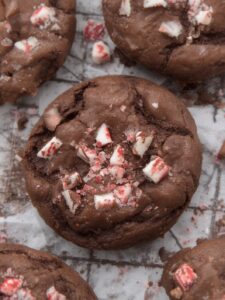The Brazilian Baking Soda Trick Recipe has been making waves in both kitchens and natural wellness routines. For generations, Brazilians have relied on simple household staples to improve their health, clean their homes, and enhance their cooking. Among these staples, baking soda — also known as sodium bicarbonate — stands out as one of the most versatile. From baking fluffy cakes to soothing digestion, this humble ingredient has become a star in traditional remedies.
In this article, you’ll discover everything about the Brazilian baking soda trick recipe: how it’s prepared, its role in health and beauty, its culinary uses, and the safest way to include it in your daily life. We’ll also answer the most asked questions people have about baking soda recipes.
Looking for inspiration? Try this Baking Soda Trick for Men Recipe that’s also trending for its detox power.
Table of Contents
ToggleBrazilian Baking Soda Trick Recipe
What is the Brazilian Baking Soda Trick Recipe?
The Brazilian baking soda trick recipe is a simple yet powerful recipe that blends baking soda with natural ingredients to create a solution for multiple purposes. Some versions are meant for baking, while others focus on health and wellness. Its popularity comes from its effectiveness and affordability, making it a staple in Brazilian households.
Why is it Gaining Popularity in Home Remedies and Cooking?
In recent years, natural remedies and DIY solutions have seen a huge rise. People are looking for alternatives that are chemical-free, safe, and budget-friendly. Baking soda ticks all those boxes. Whether it’s reducing acidity, brightening teeth, or making baked goods fluffier, this recipe offers real results without complicated steps.
The Science Behind Baking Soda (Sodium Bicarbonate)
Sodium bicarbonate is a naturally occurring compound with alkaline properties. When mixed with acidic ingredients such as lemon juice or vinegar, it creates a fizzing reaction that releases carbon dioxide. This reaction is what makes baked goods rise and also helps neutralize stomach acid. Its ability to balance pH is the main reason why it’s used in both cooking and natural health remedies.
Looking for inspiration? Try this Baking Soda and Apple Cider Vinegar that’s also trending for its detox power.
Print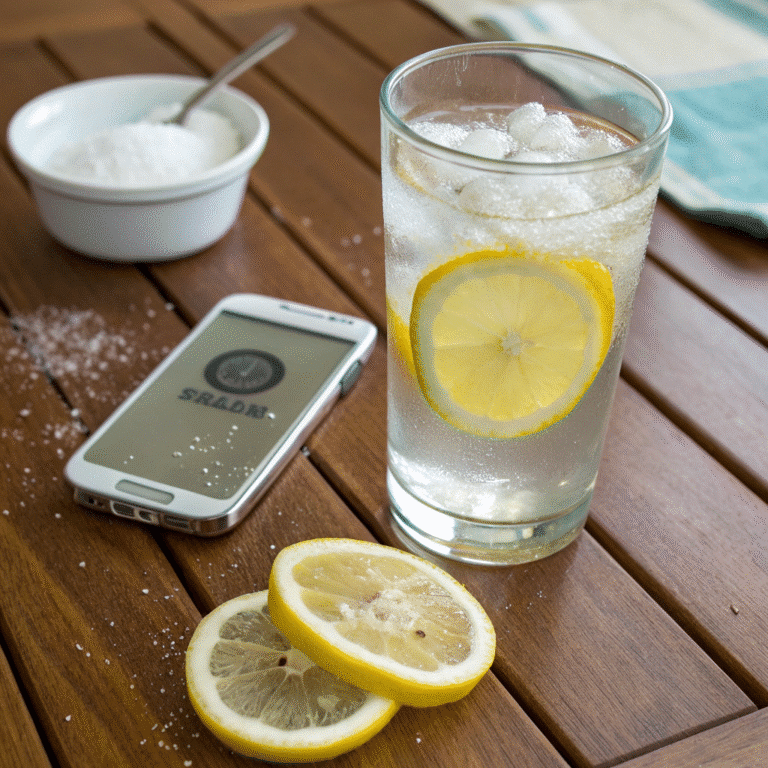
Brazilian Baking Soda Trick Recipe – Easy Guide with Benefits
5 Stars 4 Stars 3 Stars 2 Stars 1 Star
No reviews
A versatile and traditional Brazilian recipe using baking soda for digestion, baking, natural cleaning, and wellness benefits.
- Total Time: 2 minutes
- Yield: 1 serving 1x
Ingredients
½ teaspoon baking soda
1 glass (200 ml) water
Juice of ½ lemon (optional)
2 cups flour (for baking variant)
1 teaspoon baking soda (for baking variant)
1 tablespoon baking soda (for hair rinse)
1 cup warm water (for hair rinse)
2 tablespoons lemon juice or vinegar (alternative variant)
Instructions
1. For the digestive drink: Add ½ teaspoon of baking soda to a glass of water and stir until dissolved.
2. Optional: Add lemon juice for additional benefits.
3. Drink immediately on an empty stomach.
4. For the baking mix: Combine 2 cups flour with 1 teaspoon baking soda.
5. Add other baking ingredients such as milk, butter, or eggs.
6. Mix until smooth and bake as desired.
7. For the hair rinse: Mix 1 tablespoon baking soda with 1 cup warm water.
8. Apply to scalp, massage for 1–2 minutes, and rinse well.
9. Follow with diluted apple cider vinegar rinse.
10. For the fizzy detox drink: Mix ½ teaspoon baking soda with 2 tablespoons lemon juice or vinegar and 1 cup water.
11. Drink while the mixture is still fizzy.
Notes
Only consume baking soda drinks 1–2 times per week to avoid overuse.
Do not exceed ½ teaspoon of baking soda per serving.
Always fully dissolve baking soda in water before consuming.
People with kidney issues, high blood pressure, or on medication should consult a doctor before use.
In baking, baking soda acts as a natural leavening agent, helping dough rise and improving texture.
Baking soda should only be used on hair once per week to prevent dryness.
- Author: Jessica Lupone!
- Prep Time: 2 minutes
- Cook Time: 0 minutes
- Category: Health & Wellness
- Method: No-Cook
- Cuisine: Brazilian
Nutrition
- Serving Size: 1 glass (200 ml)
- Calories: 1
- Sugar: 0g
- Sodium: 285mg
- Fat: 0g
- Saturated Fat: 0g
- Unsaturated Fat: 0g
- Trans Fat: 0g
- Carbohydrates: 0g
- Fiber: 0g
- Protein: 0g
- Cholesterol: 0mg
Ingredients and Core Recipe for Brazilian Baking Soda Trick Recipe
Essential Ingredients for the Brazilian Baking Soda Trick Recipe
The heart of the Brazilian baking soda trick recipe lies in its simplicity. While different households may adapt the formula slightly, the base ingredients usually include:
- Baking soda (sodium bicarbonate): the star ingredient, responsible for balancing acidity and creating reactions.
- Water: used to dilute and activate baking soda for drinks or cleaning mixtures.
- Lemon juice or vinegar (optional): added for recipes targeting digestion or cleaning because of their acidic properties.
- Flour (for baking recipes): flour combined with baking soda creates leavening power that makes breads and cakes light and fluffy.
Some versions also include honey, coconut water, or other traditional Brazilian ingredients, depending on whether the recipe is for health or culinary purposes.
Step-by-Step Instructions to Prepare the Recipe
Here’s a simple guide to preparing the most common Brazilian baking soda trick recipe:
Brazilian Baking Soda Trick Drink (Digestive Remedy)
- Add ½ teaspoon of baking soda to a glass of water (about 200 ml).
- Stir until fully dissolved.
- Optional: Add a squeeze of lemon juice for extra digestive support.
- Drink immediately, preferably on an empty stomach.
Brazilian Baking Soda Mix for Baking
- Combine 2 cups of flour with 1 teaspoon of baking soda.
- Add liquid ingredients such as milk, butter, or eggs according to your recipe.
- Mix until smooth and bake as directed.
- The baking soda will help the batter rise, giving a light texture.
How It Differs from Regular Baking Soda Uses
The Brazilian trick is not just about adding baking soda randomly. Instead, it involves balancing the right proportions with natural ingredients for specific results:
- In health remedies, the trick ensures the body’s pH is balanced.
- In cooking, it ensures the food has the right rise and flavor.
- In home cleaning, it combines baking soda with acids to create a powerful natural cleaner.
Looking for a clean, low-impact health drink? Try our Natural Ozempic Recipe as a rotation option.

Health and Beauty Applications of Baking Soda
Baking Soda for Hair Treatments (How to Make It Work Safely)
One of the most talked-about uses of baking soda is as a natural hair cleanser. Brazilians have long used it to remove product buildup and restore shine. Here’s a safe way to prepare it:
Baking Soda Hair Wash
- Mix 1 tablespoon of baking soda with 1 cup of warm water.
- Apply the mixture to your scalp and gently massage for 1–2 minutes.
- Rinse thoroughly and follow with a light apple cider vinegar rinse to balance pH.
- Use this treatment only once a week to avoid dryness.
Tip: Baking soda is powerful. Overuse can strip natural oils, so moderation is key.
Homemade Baking Soda Drinks for Digestion and Detox
The Brazilian baking soda trick recipe is also used in homemade drinks that aid digestion, reduce bloating, and detoxify the body. A popular option is the sodium bicarbonate drink recipe with lemon:
Baking Soda Lemon Detox Drink
- ½ teaspoon baking soda
- Juice of half a lemon
- 1 glass of warm water
Mix well and drink in the morning before breakfast. This drink helps neutralize stomach acid, support gut health, and cleanse the digestive system.
Common Mistakes When Using Baking Soda for Health
While baking soda can be a natural remedy, people often make mistakes such as:
- Overusing it: Drinking baking soda daily in large amounts can harm your kidneys and upset your body’s natural pH balance.
- Ignoring medical conditions: People with high blood pressure or kidney issues should avoid frequent use without consulting a doctor.
- Skipping dilution: Baking soda must always be fully dissolved in water to avoid irritation.
Don’t miss our natural metabolism booster—the Banana Bread Recipe No Baking Soda, a great companion to this combo.
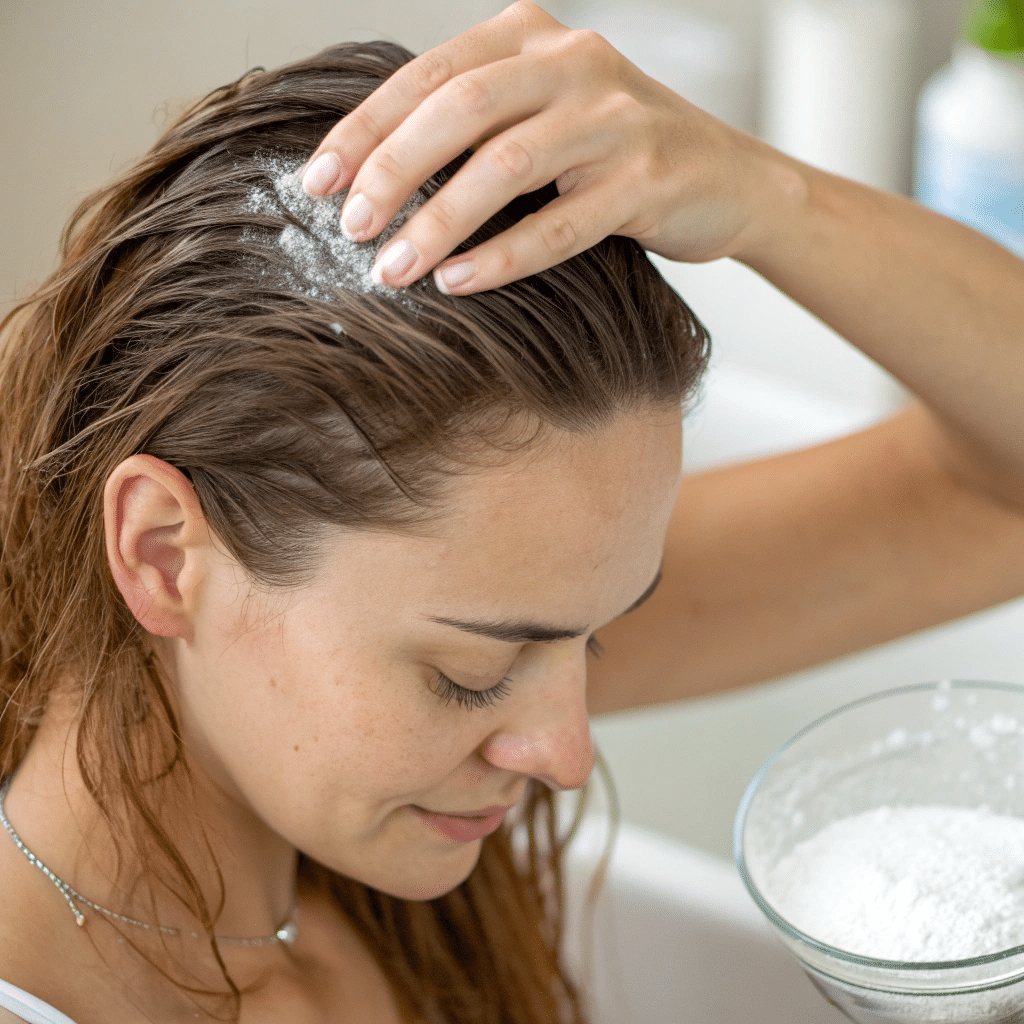
Baking and Culinary Uses of Baking Soda
The Role of Baking Soda in Brazilian Baking
In Brazilian kitchens, baking soda plays a key role in traditional recipes. From fluffy pão de queijo (cheese bread) to soft cakes, it’s often used as a natural leavening agent. When combined with acidic ingredients such as buttermilk, yogurt, or lemon juice, it produces carbon dioxide bubbles that make dough rise. This is why baking soda is often seen as the “secret weapon” in Brazilian baked goods, giving them their airy texture.
For instance, many households prepare bolo de fubá (cornmeal cake) with a pinch of baking soda to improve texture and flavor. The ingredient ensures the cake stays light and moist rather than dense.
What Is Flour with Baking Soda Called?
Flour that already contains baking soda or another leavening agent is commonly referred to as self-rising flour. This type of flour simplifies recipes because you don’t need to add additional leavening. In Brazilian cooking, however, most recipes use plain flour combined with baking soda or baking powder depending on the desired result.
Here’s a simple comparison:
| Type of Flour | Contains Leavening? | Common Use Case |
|---|---|---|
| All-purpose flour | No | Cakes, breads, pastries |
| Self-rising flour | Yes (baking soda or powder + salt) | Quick breads, biscuits |
| Brazilian cassava flour | No | Regional dishes, side dishes |
Recipes Where Baking Soda Enhances Flavor and Texture
Baking soda does more than just leaven dough. It also enhances flavor and helps achieve the right consistency in many recipes. Some common Brazilian uses include:
- Feijão (beans): A pinch of baking soda softens beans faster during cooking.
- Pão de queijo (cheese bread): Baking soda ensures the dough rises well and remains chewy.
- Bolo (cakes): It adds fluffiness to traditional cakes like bolo de cenoura (carrot cake).
- Homemade cookies: It gives cookies a tender texture and balanced sweetness.
Alternative Recipes with Baking Soda
Sodium Bicarbonate Drink Recipe Variations
Beyond the standard Brazilian baking soda trick recipe drink, there are several variations you can try, each offering unique health benefits:
- Baking Soda + Lemon: A detoxifying mix that supports digestion and balances pH.
- Baking Soda + Honey: Combines soothing honey with alkalizing baking soda for sore throats.
- Baking Soda + Coconut Water: A refreshing Brazilian twist that helps rehydrate and restore electrolytes.
- Baking Soda + Apple Cider Vinegar: Popular for aiding digestion and reducing bloating.
Each of these recipes should be consumed in moderation — no more than a few times a week — to avoid disrupting the body’s natural balance.
Mixing Baking Soda with Lemon or Vinegar
One of the most common Brazilian practices is combining baking soda with either lemon juice or vinegar. The acidic ingredient activates the sodium bicarbonate, causing a fizzy reaction. While this fizz is fun to watch, it’s also functional:
- With Lemon: Helps relieve indigestion and provides a vitamin C boost.
- With Vinegar: Commonly used in natural cleaning solutions, but in small amounts, it can also support digestion.
Quick Recipe:
- ½ teaspoon baking soda
- 2 tablespoons lemon juice or vinegar
- 1 cup water
- Mix well and drink immediately while it’s still fizzy.
Traditional vs. Modern Uses of Baking Soda in Kitchens
Historically, Brazilian households used baking soda mainly for baking and basic cleaning. However, in modern times, its applications have expanded to health remedies, detox drinks, and even beauty treatments. Today, it’s considered both a pantry essential and a natural wellness tool.
Here’s a quick breakdown:
| Traditional Uses | Modern Uses |
|---|---|
| Leavening bread & cakes | Detox drinks for digestion |
| Softening beans | Natural deodorant & toothpaste |
| Cleaning pots & pans | DIY hair treatments |
| Household cleaning | Skin exfoliation remedies |
Safety Tips and Best Practices
How Much Baking Soda Is Safe for Daily Use?
Baking soda can be incredibly beneficial when used properly, but too much of a good thing can cause problems. According to health experts, the safe dosage for most adults is about ½ teaspoon dissolved in water, once or twice a week. For culinary uses, the small amounts added to baking recipes are generally safe for daily consumption.
When used as a drink, it’s best not to exceed ½ teaspoon per day. Overuse may raise sodium levels in the body, leading to health risks like high blood pressure.
Side Effects of Overusing Baking Soda in Recipes or Health Remedies
While the Brazilian baking soda trick recipe offers many benefits, overusing it can cause side effects, such as:
- Digestive discomfort: Too much baking soda can lead to nausea, cramps, or diarrhea.
- Increased sodium intake: Baking soda is high in sodium, which can negatively affect heart and kidney health.
- Skin dryness or irritation: If applied too often in beauty routines, baking soda may strip away natural oils.
- Electrolyte imbalance: Excessive intake can disturb the body’s natural balance of minerals.
It’s important to remember that baking soda is not a cure-all and should never replace professional medical advice.
Medical Guidance and Expert Opinions
Health organizations such as the Mayo Clinic and WebMD highlight that baking soda can be effective for occasional indigestion relief, but it should not be used long-term without supervision. Doctors often recommend limiting use to short-term remedies and avoiding it altogether for individuals with:
- High blood pressure
- Heart disease
- Kidney conditions
- Pregnant or nursing women (unless cleared by a doctor)
If in doubt, consult a healthcare provider before making baking soda a regular part of your routine.
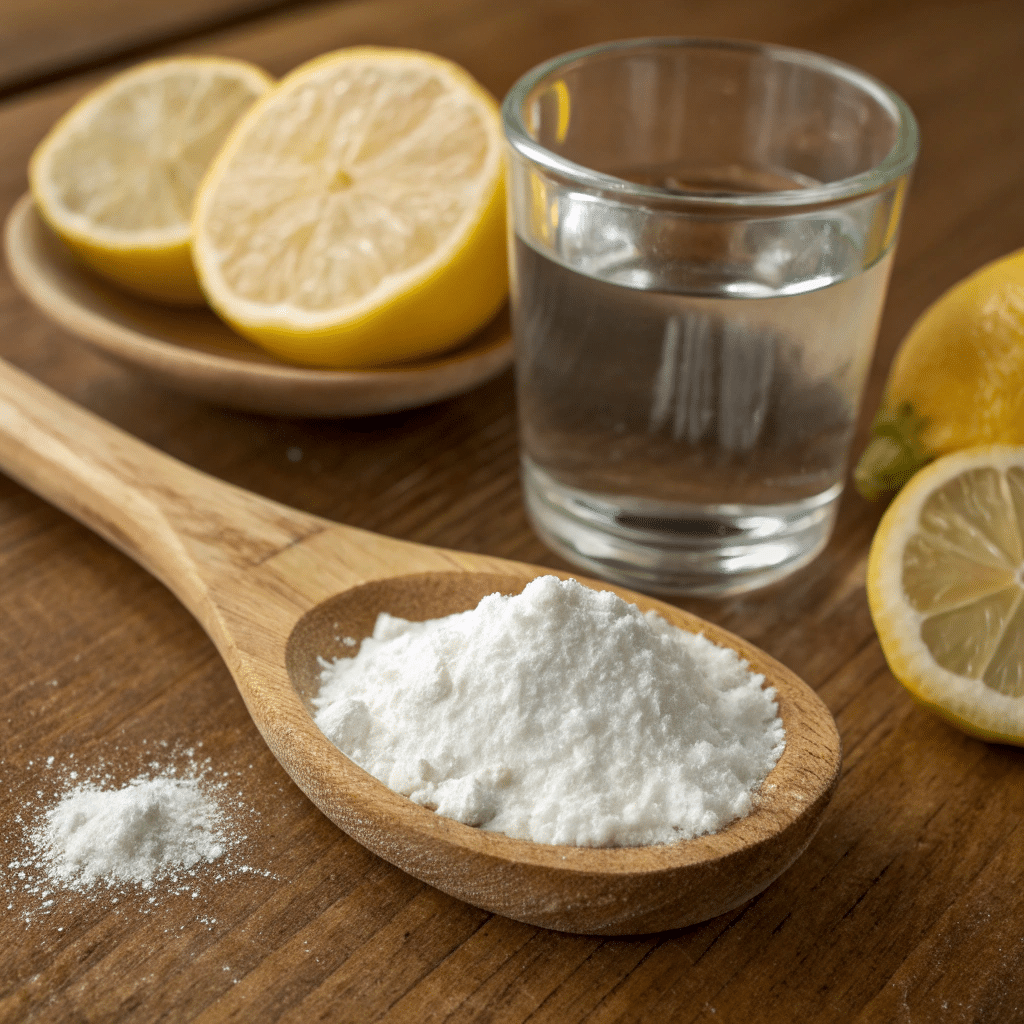
Conclusion About Brazilian Baking Soda Trick Recipe
Key Takeaways from the Brazilian Baking Soda Trick Recipe
The Brazilian baking soda trick recipe shows how a simple kitchen staple can serve multiple purposes — from baking delicious breads and cakes to supporting digestion and even offering natural beauty solutions. By combining baking soda with water, lemon, or flour, you unlock a versatile remedy that has stood the test of time.
Encouragement to Try It Responsibly at Home
While this recipe is safe and effective when used in moderation, it’s important to remember that baking soda is a powerful compound. Use it sparingly, follow the recommended proportions, and consult a healthcare provider if you have pre-existing conditions. Whether you’re baking fluffy pão de queijo, making a homemade detox drink, or using it as a hair rinse, the Brazilian baking soda trick recipe can easily fit into your daily life.
For more recipes Follow me in our Social media
Facebook: https://www.facebook.com/profile.php?id=61573913076847
Pinterest: https://www.pinterest.com/momandgrandmacooks/
Medium: https://medium.com/@momandgrandmacooks
Frequently Asked Questions About Brazilian Baking Soda Trick Recipe
What is the recipe for baking soda?
Baking soda itself isn’t a recipe — it’s a natural compound called sodium bicarbonate. However, the Brazilian baking soda trick recipe typically involves mixing ½ teaspoon of baking soda with a glass of water. Sometimes lemon juice or vinegar is added to activate it.
How do you make baking soda hair treatment?
To prepare a baking soda hair rinse:
Mix 1 tablespoon of baking soda with 1 cup of warm water.
Massage gently into your scalp.
Rinse well and follow with diluted apple cider vinegar to balance the pH.
Use this only once a week to avoid dryness.
How do you make homemade baking soda drink?
A simple homemade baking soda drink is made by dissolving ½ teaspoon of baking soda in a glass of water. Some versions add lemon juice or honey for flavor and extra benefits. This drink is often used in Brazil for digestion and detox.
What is flour with baking soda called?
Flour that already contains baking soda or another leavening agent is known as self-rising flour. While not as common in traditional Brazilian baking, self-rising flour is widely used in quick breads, pancakes, and biscuits.

